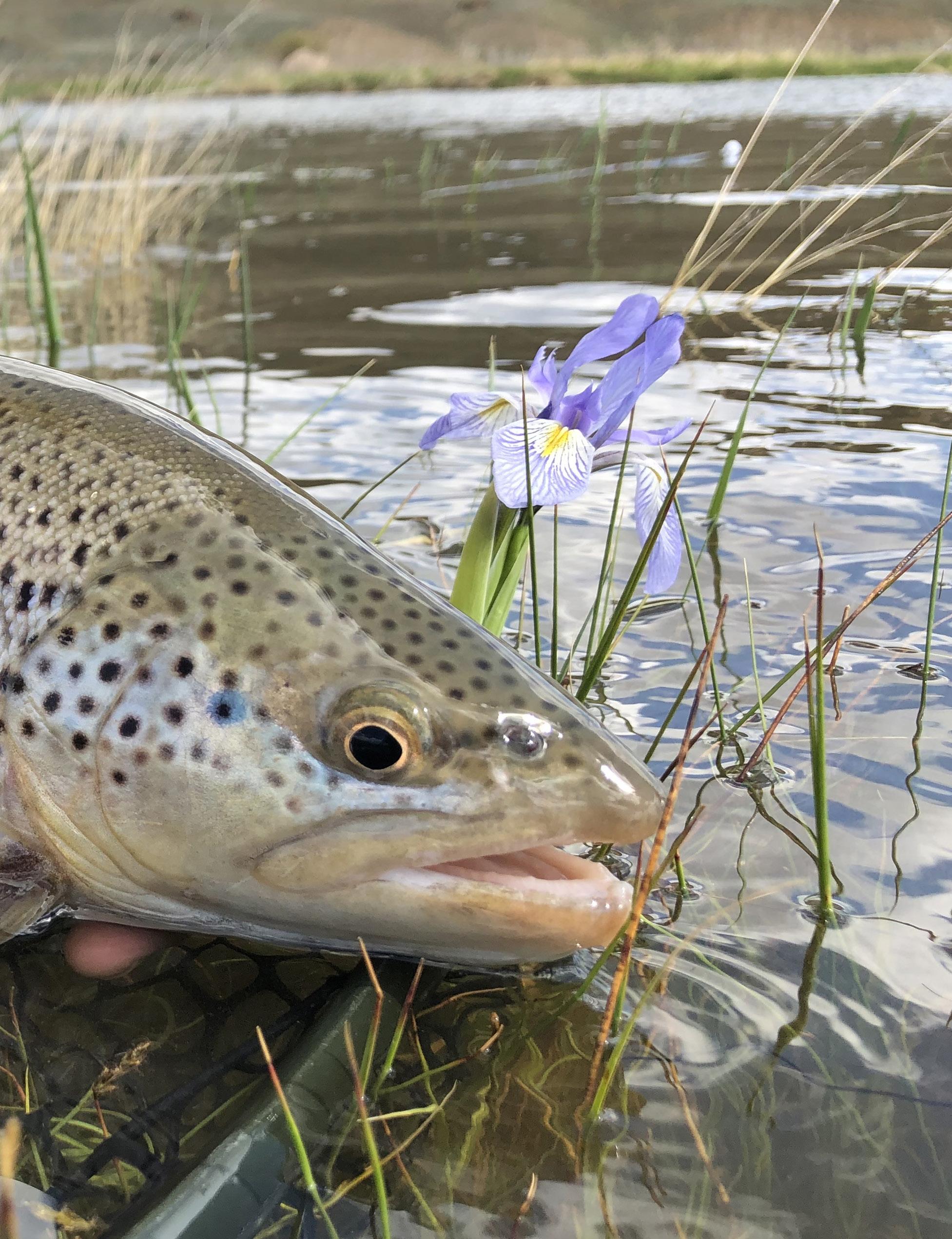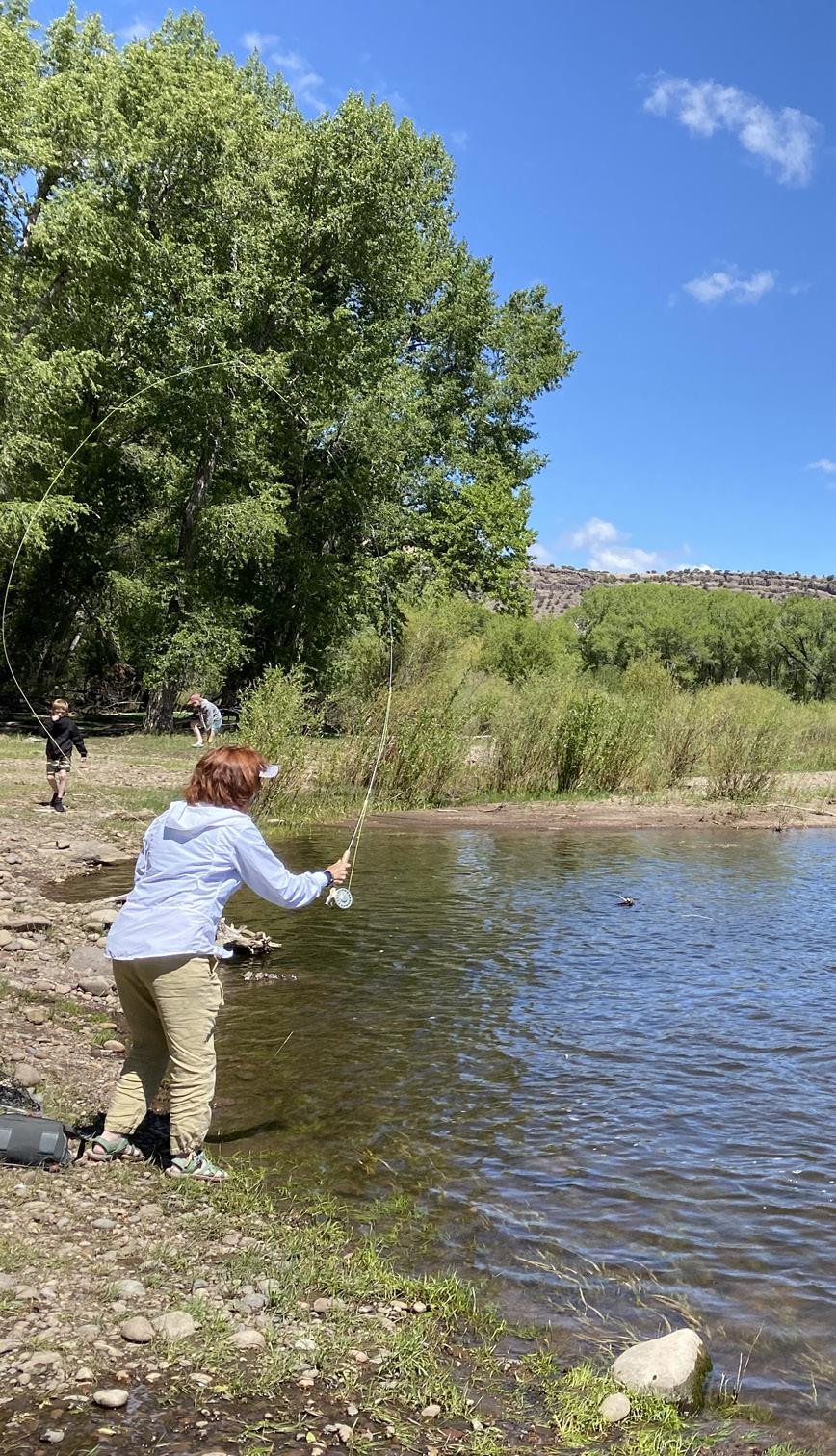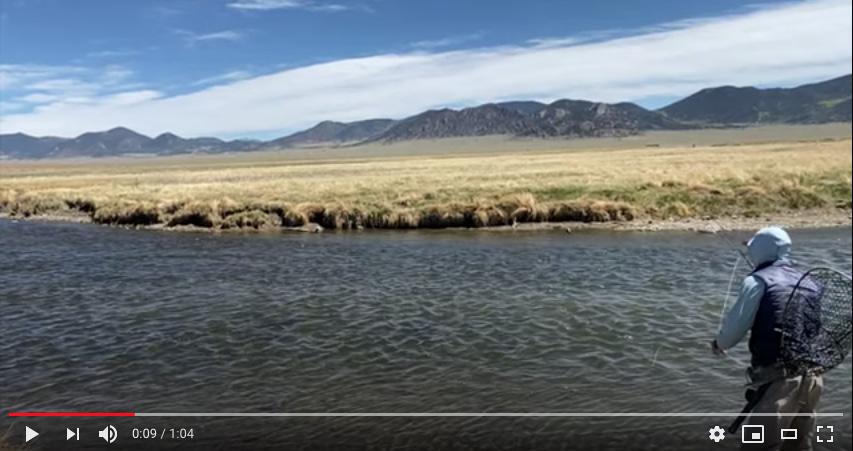
6 minute read
Reading Water on the Move

Reading Water on the Move by Landon Mayer
Sight fishing for trout starts with reading the best water at the beginning of the hunt. While it is easy to locate a conventional run or seam of fast water, there are locations and structure points that are not easy to locate, and can hold a majority of the fish. With pressure growing more now than ever, locating productive water to search for targets is the best way to not only become the ultimate trout hunter, but will also help you remain a student of the game….keep you on the prowl for new water and un-pressured fish. The following locations and tips are with the trip for this summer’s high and low water conditions.
Vegetation Valleys
As the summer sun penetrates the water, vegetation may cover up your favorite fishing locations, or grass will continue to grow, making it impossible to achieve the same drift or presentation as when the waterways were open. Problems result when anglers begin to move and search for open water without first examining the water where they know trout prefer to hold. This vegetation is a relief for large trout that have been exposed in runs. It allows them to feed without stress or worry, and it gives anglers a chance to hook up with more large trout. You can often find pockets in the vegetation, but long strips of open-water “valleys” can be found in almost all of this green structure. Even if the valley of open water is only six inches wide, it will allow you to get a long drift and achieve depth at the same time. Ideal structure allows you to wade up to the edge of the open water; the steep vegetation walls prevent the fish from seeing side to side. You can present to some of the largest brown trout of the year and be only a few feet away and in the cover of vegetation, while still seeing your target in detail.
To present effectively in these situations, use tension during your drift with the rod tip directly above the flies and leading your rig downstream at a 45-degree angle. One of my favorite techniques is “tension drifting.” It allows you full control of your flies and is easy to adjust if needed. By simply lifting or dropping the rod tip, you can control your depth or, by leading or stopping the rod tip from moving downstream, you can control the speed with which your flies move. This will let you fit into these valleys whether they are big or small, deep or shallow. In addition to tension drifting, twitching your flies can also be very effective. In some situations, having the rod tip low and close to the water’s surface will spook fewer trout. From this rod position, if you twitch the tip 6 to 12 inches, the flies will lift in the water column, preventing snags. I will often twitch the flies into position up stream of the trout, where I can then pause the rod and allow the flies to drift accurately into the trout’s viewing lane.

Rifle Rewards
When many anglers are learning to “read” the water, prime spots to look for trout include pools and deep runs; however, on pressured public water, trout often prefer riffles. Riffles not only have broken water (which obscures a trout’s view of you), but they are also food factories. In addition, riffles also produce oxygen that keeps the trout healthy, especially in warm water conditions. For these reasons, riffles are the best feeding grounds for trout. Riffled waters are prime locations for sight-fishing because the image the trout see above the water’s surface is distorted by the rolling waves of water. This will allow you to get closer to large trout, permitting you to see the take, and understand how trout move when they feed. This knowledge can be applied to many situations: a fish looking for midges in warmer, shallow waters in winter; a trout looking for drowned spinners during a dense summer hatch; or a big predatory fish looking for a large topwater meal blown onto the surface from the river’s edge. These riffled rewards found in the water between conventional runs will improve your results and reveal new details about the waters you’ve fished since you started fly fishing.

FLY FISHING FOR TROUT IN RIFFLED WATER ON LANDON MAYER FLY FISHING YOU TUBE
https://www.youtube.com/watch?v=OZ8q4Cn4sJM
Keep in mind that most of the time the water will be shallow, making it tough to get the long drifts you might be accustomed to in deeper water. Systematically fan the run by making a grid and presenting flies a short distance in each drift—ten feet or so. This will prevent you from snagging river bottom, and will produce more swings at the end of the drift, which mimics an emerging meal and keeps your flies taut above the river bottom, where suspended trout are feeding. Lastly, keep depth control in mind. Unlike in deep runs or shelves where you want flies to sink quickly, here you want the flies to sink at a slow pace so they remain in the middle column of the water, often 12 to 24 inches below the surface. Micro shots or small pinches of putty will start you off light. Another way to control depth is by removing unnatural weight and relying on plastic beads; you will get a slow sink rate and achieve long drifts to shallow feeding trout without snagging the river bottom Soft Water Breaks
Every fly fisher will experience high flows and the challenge of finding water that trout can hold in without expending too much of their energy. Large trout especially are lazy and are not willing to fight the current. The problem in high flows is that you can’t see structure and seams that are visible at normal flows, making it hard to read the water and locate proper holding spots for the trout. When water covers structure and a heavy current washes out seams, you can still fish these locations, even in dirty water. You want to target soft water breaks that are visible on the water’s surface.
They can be calm windows of water in heavy currents, a slow section in the middle of a fast current, or points on the river’s edge that extend out from the bank like little peninsulas. Slower water speeds allow the trout to take a break from the heavy current. Lastly, islands are an angler’s best friend in high-flow conditions. Small side channels that in other seasons normally look like a trickle can hold trout escaping the river’s heavy current. Large trout avoiding the flood can be found from the entrance of the side channel to the river’s main current.
Many times, the merging seams around islands are the slowest sections of a racing waterway. It is common to find large trout here, and they can be in plentiful numbers. Your drifts will not always be long, and the trick is getting down to the fish in short distances. Thinking ahead one split shot, or pinch of putty, add more weight to achieve the proper depth. It’s a safe bet in these high water marks that you’ll need more lead to reach the fish than in calm water.
By incorporating these techniques into your routine, you can “ leave no stone unturned “ during your next trout hunt, making surprise hiding spots an opportunity for success.
About The Author
Landon Mayer is a veteran Colorado guide and author of several books. His newest books, The Hunt for Giant Trout, and Sight Fishing for Trout (Second Edition) can be purchased on his website, at www.landonmayerflyfishing.com. His newest video, Master the Short Game, by Headwater Media, can be purchased at www.mastertheshortgame.com. You can follow Landon on Instagram at @landonmayerflyfishing.











